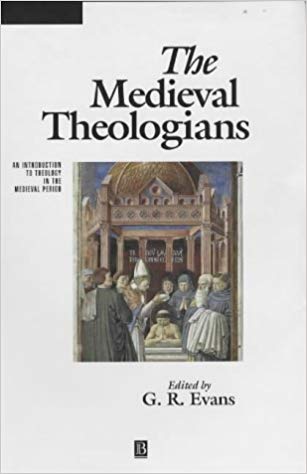A Brief Book Summary from Books At a Glance
By Joshua K. Smith
About the Editor
R. Evans is the professor of medieval theology and intellectual history at the University of Cambridge. She has authored numerous works, including Philosophy and Theology in the Middle Ages, Getting It Wrong: the Mediaeval Epistemology of Error, and Bernard of Clairvaux.
Overview
This volume approaches examining the Medieval theologians through a chronological framework. Each chapter is represented by a renowned scholar who clarifies the relevance of a particular theology and their influence on contemporary theological thought. This work wonderfully illustrates the major issues and debates before the reformation and its bearing on the relation to ecclesiology and politics.
Outline
Introduction
Part I: The End of the Ancient World
Part II: The Carolingians
Part III: A Medieval “Renaissance”?
Part IV: The High Medieval Debate
Part V: Dissent
Conclusion
Summary
Introduction
G. R. Evans
How did theology and philosophy continue to develop after the patristic era? How did theology and ecclesiology function within the medieval church? In broad strokes, each chapter of this work seeks to answer these two questions. During the Middle Ages, theological education resurges and expands the framework of the church, both in its political and clerical realm. Theology serves the church in two ways: (1) theology is a teaching office of the Church, and (2) theology served as an apologetic–responding to the questions about faith. There is a duality between reason and authority in this period that stems their approach to epistemology and ecclesiology. The question is whether or not the medieval theologians went too far?
Part I: The End of the Ancient World
Chapter One: Augustine of Hippo
John Rist
The Neoplatonist bishop of Hippo (ca. 354-430), Augustine, sought to bridge the thought of two cities; the city of God and the city of man. While Augustine’s thought is theologically unsystematic, it is an attempt reconcile the conflict between the philosophy of Greek contemporaries (e.g., Plotinus) and biblical thought about metaphysics. In a sense, Augustine baptizes the literature and thought of Greco-Roman philosophical thought into his understanding of Scripture-which is typical of patristic thought (cf. Martyr’s understanding of Plato and Moses).
Like many other medieval theologians, the concerns in theologia are centered around the authority and praxis in the church. The doctrines that Augustine formulates are out of pastoral concern and responsibility as a bishop. Also, in his thought, there is a balance between expectation and ideal. For example, while Augustine desired his clergy live a monastic life, but fully expected that this would not be realized (see On Free Will for discussion about sin and virtue). Augustine’s view of a Christian society was encapsulated by the concept of unity. This is influenced by Plato’s ideas in the Republic, but more emphasis is placed on the eschatological vision of the city of God. Christians were to emulate and foreshadow the world to come in all human activities.
Chapter Two: Boethius, Cassiodorus, Gregory the Great
Charles Kannengiesser
Boethius (ca. 450-524/6), chief officer to the crown of Theoderic of Italy, developed his theology in a turbulent time. Extremist Catholics were persecuted Arian groups throughout Italy. Also, there were rumored plots against the crown relating to the tension between Arian and Gothic groups. Boethius found himself in prison after defending senator Albinus, rumored plot instigator, and this provided the context in which he would write Consolation of Philosophy. In this work, He contemplated the meaning of life–is there a benevolent creator sustaining and ordaining all aspects of life? Influenced by Plato’s Timaeus and ideas of transmigration of souls, Boethius concludes that while things may appear less than good in the movement, ultimately all things work out for good.
Cassiodorus (ca. 485-580) was a man of many hats (historian, statesman, and monk). After Theoderic’s death, Cassiodorus became praetorian prefect and later Patrician. His political oversight as head of administration prepared him for his later career in creating Vivarium, a monastery. His emphasis here was the scriptorium, preserving the manuscripts and thought of Rome, which was being threatened by the influence of barbican culture. He later becomes a major influence on the work of biblical exegesis through his work Study of Divine and Secular Literature.
Georgy I (ca. 540-640) was born into nobility, and his early education reflected more of law and government than the classical humanities. Around 573 he was elected praefectus (chief civil official) of Rome. Gregory was sent to the East during a tremulous time in the life of Rome. He immersed himself in the culture and administration of Byzantium. Later this time in the East would help mitigate controversy between Western and. . .
[To continue reading this summary, please see below....]The remainder of this article is premium content. Become a member to continue reading.
Already have an account? Sign In
Buy the books

The Medieval Theologians: An Introduction to Theology in the Medieval Period